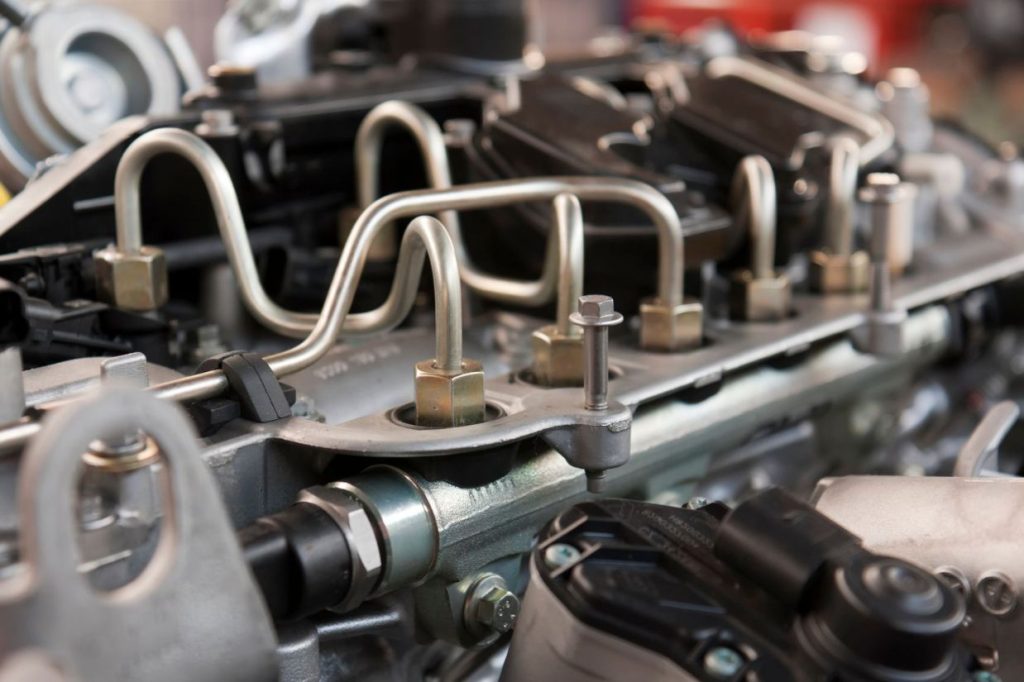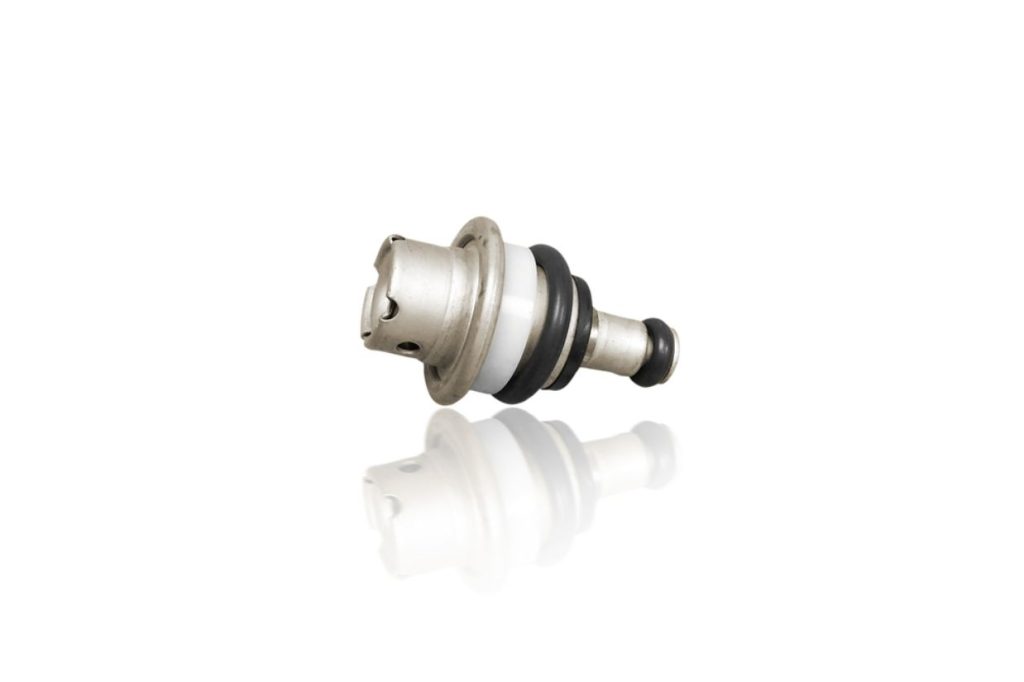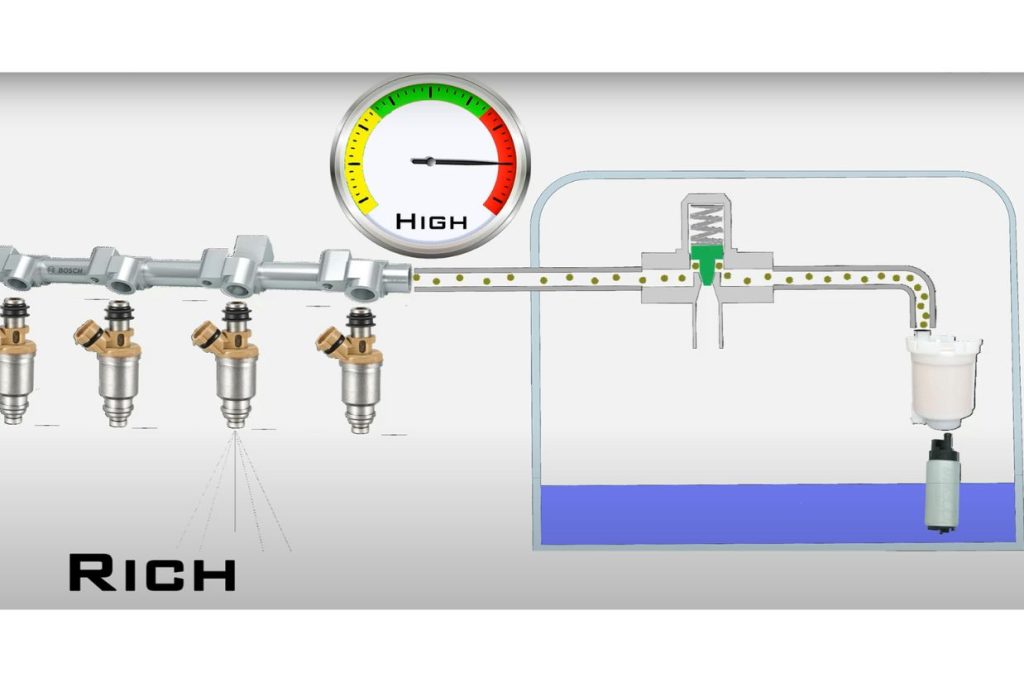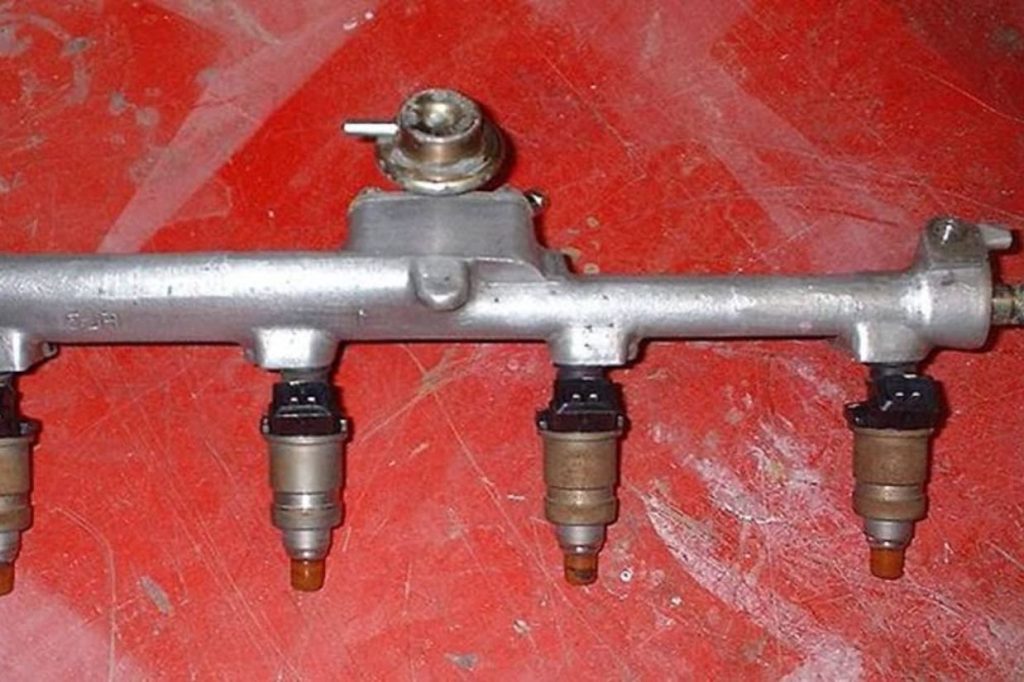Your car’s engine is like a hungry bear. The fuel pressure regulator is like the bear’s keeper, making sure it gets the right amount of food at just the right time. But if the keeper gets sick, the bear could get too much or too little food.
That’s not good for the bear or for us when our fuel pressure regulator starts acting up. We’re going to share with you why this tiny part is super important and the tell-tale signs it might be getting sick.
Let’s Learn About the Fuel Pressure Regulator!
Let’s talk about the fuel pressure regulator in your car. It’s a small part, but boy, does it have a big job!

What Does a Fuel Pressure Regulator Do?
Think of the fuel pressure regulator as the heart of your car’s fuel system. Its job is to keep the pressure just right for the fuel injectors. Without the right pressure, your car’s engine can’t run smoothly!
But there’s more! The fuel pressure regulator also changes the fuel pressure when the engine vacuum changes. It’s kind of like a seesaw. If the vacuum goes up, the fuel pressure goes down, and vice versa. This helps to keep the fuel pressure perfect for how your car’s engine is running.
Why is the Fuel Pressure Regulator Important?
So, why should you care about the fuel pressure regulator? Well, it helps your car in two big ways.
First, it makes sure your engine gets just the right amount of fuel. Not too much, not too little, but just right. If your engine doesn’t get the right amount of fuel, it won’t run well – or it might not run at all.
Second, the fuel pressure regulator stops fuel from leaking. If the regulator isn’t working right, fuel can leak out. This wastes fuel and could even be a fire risk!
So, your car needs a working fuel pressure regulator. It is small, but it can cause big problems if goes wrong. In the next sections, we’ll tell you all about the signs of a faulty fuel pressure regulator and how to check if yours is working right. Stay tuned!
Symtomps Of a Faulty Fuel Pressure Regulator
What can go wrong when your fuel pressure regulator isn’t working right? This tiny part plays a big role in how well your car runs and how much gas it uses.

What to Watch For
When your fuel pressure regulator is on the fritz, your car might start guzzling gas, lose power, puff out black smoke, leak gas from the tailpipe, or have spark plug issues. All of these problems can mess with your car’s performance and make driving less fun and more expensive.
Overconsumption of Gas
If your car starts acting like a gas hog, your fuel pressure regulator might be to blame. It controls how much fuel gets to your engine. When it messes up, your car ends up using more gas than it should.
Feeling Sluggish
If your car feels like it’s dragging its feet, it might not be getting enough gas. A wonky fuel pressure regulator can cause this problem, making your engine lose power.
Smoking is Bad For Your Car, Too
Black smoke is never a good sign. If you see it coming from your exhaust, it means your fuel isn’t burning right. A faulty fuel pressure regulator can cause this mess by messing up the mix of air and fuel in your engine.
Leaky Tailpipes
If you spot gas dripping from your tailpipe, you’ve got a leak. A bad fuel pressure regulator can cause this problem, and it’s one that you should get fixed right away.
Spark Plug Troubles
Having trouble with your spark plugs? They could be getting fouled up by a bad mix of air and fuel, another thing that can happen when your fuel pressure regulator isn’t doing its job.
Knowing what to look for can help you spot a bad fuel pressure regulator before it causes more trouble. Remember to check your car regularly and take good care of it to keep everything running smoothly.
Spotting a Bad Fuel Pressure Regulator
Keeping your car running smoothly means catching problems early. Knowing how to spot a bad fuel pressure regulator can save you time, money, and stress.

Diagnosing a Bad Fuel Pressure Regulator
Looking for Fuel Leaks: Start by looking for leaks. If you see puddles or stains near your car’s engine, you might have a fuel leak. This is often a sign of a bad regulator.
Listening for Strange Noises: Next, you need to use your ears. If you hear odd squeals or hums from your car, your fuel pump might be struggling. This could be because of a bad regulator.
Checking Fuel Pressure: Finally, check your fuel pressure with a gauge. If the pressure is way too high or keeps changing, your regulator could be the problem.
When You Should Get a Pro
Now, you can do all these checks yourself. But sometimes, you need a pro. They can spot problems you might miss and stop them from getting worse. Plus, they can fix tricky issues that might be too hard to handle on your own.
So, if you’re not sure what’s wrong, or if the problems keep coming back, it’s time to call a pro. They’ll make sure your car is safe and ready to roll.
What Happens When a Fuel Pressure Regulator Valve Goes Bad?
If you’re a car owner, you need to know what could go wrong with your vehicle. One issue to keep an eye on is a bad fuel pressure regulator valve. You don’t want this little part to fail. Here’s why.

The Trouble Caused by a Bad Valve
Imagine your car as a thirsty runner. The fuel pressure regulator is like a water bottle, delivering just the right amount of water – or fuel – when needed. But what if that water bottle starts leaking or can’t control the water flow? That runner won’t perform at his best, right? It’s the same with your car.
If your fuel pressure regulator goes bad, your car’s engine won’t get the right amount of fuel. This can lead to your car losing power, stalling, or even breaking down. And let’s be honest, nobody wants that.
The Long-Term Risk of a Bad Valve
If your fuel pressure regulator stays faulty for too long, it can cause your engine to get too much or too little fuel. Like a runner getting too much or too little water, this can lead to bigger problems. Your car’s engine could overheat or even fail. That’s a big, costly headache you’d rather avoid.
And here’s another thing. A bad regulator can cause your car to smoke a lot – black smoke, to be specific. It’s like your car is having a bad cough, and it’s not good for Mother Earth.
Check Your Fuel Pressure Regulator
Yes, you can test your fuel pressure regulator! It’s key to keep your vehicle running smooth. Let’s break it down.
How to Test
Two easy ways to test are:
- Use a gauge: This tool measures your fuel pressure. It’s like taking your car’s blood pressure!
- Do a leak-down test: This helps find any fuel leaks. A leak might mean your regulator isn’t working right.
Step-by-Step Guide
Testing isn’t too hard when you know the steps. Here’s how to do it:
- Use a gauge: Hook the gauge to the port on the fuel rail. Start your car and watch the gauge. It should be in the range your car’s maker says is okay.
- Do a leak-down test: With the gauge still hooked up, turn off your car. If the gauge drops, that might mean you have a leak.
Don’t forget: safety first! Always wear gloves and safety glasses.
Even though you can do these tests, it’s often best to have a pro help. They know all the ins and outs of your car’s fuel system. They can make sure your tests are right and help if anything goes wrong.
Conclusion
A well-working fuel pressure regulator is key for your engine. It keeps your engine running smoothly and efficiently. Without it, your vehicle could suffer serious damage.
We can’t stress enough the risks of a faulty fuel pressure regulator. It could harm your engine and even the environment. That’s why it’s crucial to be aware of the signs of a faulty regulator.
Lastly, we want to remind you of the importance of regular checks. Make sure your fuel pressure regulator is in top shape. If you’re unsure, it’s best to get professional help. Keeping your vehicle healthy is a team effort. And remember, we’re here to help guide you every step of the way.
